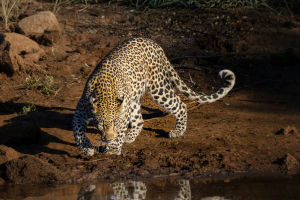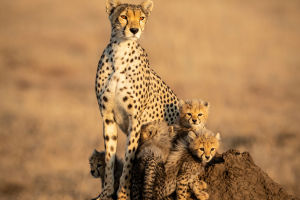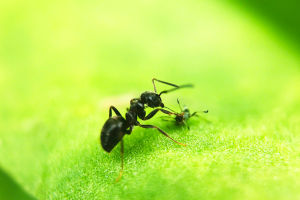
Leopards are known for their incredible adaptability.
These majestic big cats are found across diverse environments, from savannas and mountains to tropical rainforests and semi-deserts.
Today, leopards are typically divided into nine subspecies: the African leopard, Indian leopard, North China leopard, Far Eastern leopard, Indochinese leopard, Arabian leopard, Persian leopard, Sri Lankan leopard, and Javan leopard. Among these, the African leopard is found primarily in Africa, while the other eight subspecies are spread across Asia and are collectively referred to as the Asian leopards.
The Current State of Leopards and the Importance of Genetic Research
Over the past century, human activities such as habitat destruction, excessive hunting of leopards and their prey, and illegal poaching have led to a significant decline in leopard populations. Today, only the African leopard and Indian leopard have relatively stable populations, numbering around 10,000 individuals. Other subspecies, such as the Indochinese leopard, are much fewer, with estimates ranging from 973 to 2,503 individuals. Six of the nine leopard subspecies have fewer than 1,000 individuals, and in some regions, leopards have already gone extinct.
In light of this, conducting genetic research on leopards to understand their population history, structure, and dynamics has become crucial for conservation efforts. Recently, scientists from the University of Potsdam and other institutions published a surprising study in Current Biology. They used leopard fur specimens from natural history museums for genetic analysis, offering new insights into leopard genetics.
Using Museum Samples for Genetic Analysis
Genetic analysis typically requires fresh tissue samples, but this is not always feasible for leopards. Many leopard subspecies have extremely low populations, making it difficult to obtain fresh samples. Additionally, invasive sampling methods could harm these sensitive animals. While it's easier to obtain samples from leopards in zoos, many of these are hybrids from different subspecies.
Considering these challenges, the researchers turned to fur specimens stored in natural history museums. They analyzed the genomes of 26 leopards (14 African leopards and 12 Asian leopards), including 18 fur samples from museum collections. This allowed the scientists to compare and analyze the genetic differences between the subspecies in a non-invasive way.
The Surprising Genetic Differences Between African and Asian Leopards
Normally, genetic differences between species are larger than those between subspecies. However, the researchers were surprised to find that the genetic differences between African and Asian leopards were greater than the differences between brown bears and polar bears. African leopards have significantly higher genetic diversity, about twice as much as that of Asian leopards. Among the Asian subspecies, those with smaller populations, like the Far Eastern leopard, had lower genetic diversity compared to larger populations like the Indian and Javan leopards. Previous studies have found that African leopards have four times the genetic diversity of the Far Eastern leopard, twice that of lions, and five times that of cheetahs.
Why Does the African Leopard Have Higher Genetic Diversity?
By studying the mitochondrial DNA of leopards, researchers hypothesize that leopards may have originated in the northwest of Africa, with some migrating to Asia around 500,000 to 600,000 years ago. Since then, there has been minimal hybridization between African and Asian leopards.
The higher genetic diversity in African leopards may be due to two main factors:
1. Founder Effect
The founder effect refers to a situation where a small number of individuals from one area migrate to establish a new population, resulting in lower genetic diversity. Early populations of Asian leopards were established by only a few individuals migrating from Africa, leading to a genetically limited population.
2. Geographical Isolation
In Africa, the geography allows for greater movement of leopards across habitats, facilitating genetic exchange and maintaining diversity. In contrast, Asia's mountains, plateaus, lakes, and oceans create more barriers to leopard movement, resulting in weaker genetic flow and lower diversity.
The Importance of Genetic Diversity for Survival
Genetic diversity plays a vital role in the survival and long-term health of a species. Higher genetic diversity provides animals with a better ability to adapt to environmental changes, such as climate shifts and habitat destruction. In the past 200 years, African leopards have lost 48%-67% of their habitat, while Asian leopards have lost 83%-87%. While human activities have driven habitat loss, African leopards' higher genetic diversity has allowed them to better withstand these challenges compared to their Asian counterparts.
Could the Leopard Family Expand to Six Species?
As mentioned, the divergence between African and Asian leopards occurred around 500,000 to 600,000 years ago, which is about the same time brown bears and polar bears split into separate species. Given the genetic analysis results, scientists believe that African and Asian leopards could eventually be classified as two distinct species. If this happens, the leopard family, currently consisting of five species—tigers, lions, leopards, jaguars, and snow leopards—would expand to six species.
This isn't the first time that genetic research has challenged traditional classifications. For instance, in 2006, scientists discovered that the clouded leopards of the Sumatran Islands and mainland Asia had significant genetic differences. This led to the classification of two distinct species of clouded leopard, changing the genus from one species to two.
Although the genetic evidence for separating African and Asian leopards is strong, scientists stress that more research and discussions within the scientific community are needed before officially splitting the two subspecies into distinct species.
As we look deeper into the complexities of leopard genetics, we can't help but be fascinated by how even small genetic differences can drastically shape a species' survival. What do you think, Lykkers? Could the world of big cats be about to change forever? Let us know your thoughts!


